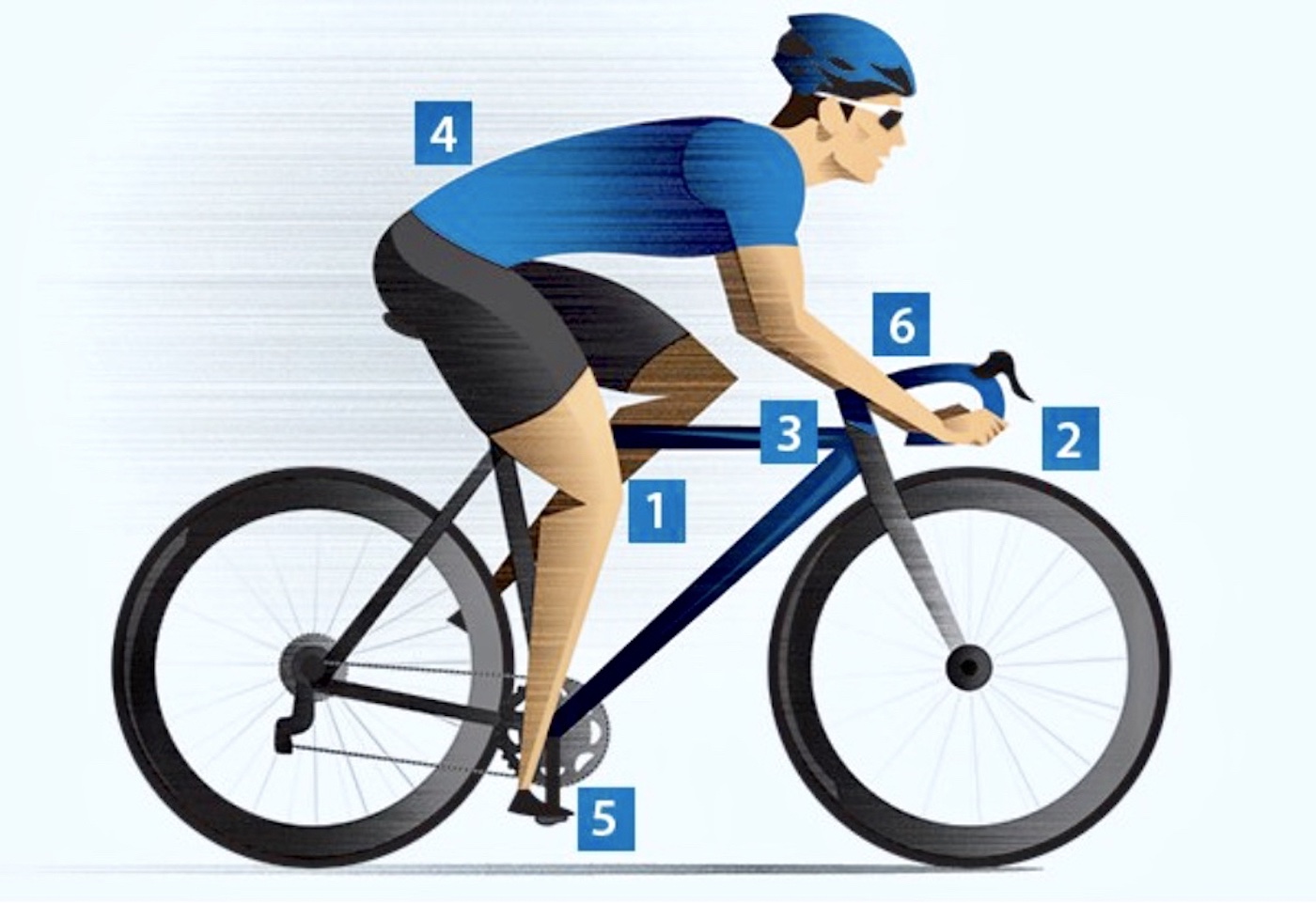

feature article by BikeFit
As a cyclist, it’s imperative to familiarize yourself with the differences between bike fitting and bike sizing. These terms are used by bike shops and professional fitters for the following reasons:
- New bike purchase
- Pain or discomfort
- Desire to increase power and efficiency
Often bike fitting and bike sizing become intertwined, but they are completely different. With that said, fitting a road bicycle works best when you start with the right size bike or at a minimum, a bicycle that is close enough to your right size. As a result, both contribute to a comfortable, powerful and efficient ride.
Bike Sizing
Sizing a bicycle is not as complicated as you may have been led to believe, in part due to the reality that a good bike fit actually has little to do with the bicycle per se. Yet, we will touch on that part more in the fitting section.
Bike sizing is the process of taking the measurements of an individual and applying those specific measurements to match a person to the correctly sized bike frame. Depending on where you go to get measured (or if you are doing this at home), you may find that shops, fitters, or a multitude of websites provide you with numerous ways to discover the correct bike size. One of the earliest methods was a formula applied by French Coach and former pro cyclist, Cyrille Guimard based on the inseam. Greg Lemond later used and popularized this method of multiplying the inseam measurement by .883 to determine saddle height and frame size.
A similar methodology remains in use today by some bike shops who will measure your inseam and have you stand over a bicycle top tube to obtain the proper frame size. If you use the ubiquitous Google search method, you’ll likely find a chart that suggests the best size for you based on a few measurements like you were purchasing a t-shirt or a hat (you are less likely to experience an injury from hat or t-shirt which is why bike fitting is vital).
Other sizing resources or formulas will use multiple measurements (see the image to the right) to match you with the perfect frame. Considering the plethora of options with seat posts, stem lengths, riding positions and cycling disciplines, it’s vital that the shop or fitter ask you about what type of riding you’ll be doing to pick out the correct frame. This goes without saying that this process should be completed in order to ascertain your frame size before fitting.
Bike sizing has also become much more elaborate than the early methods of formulas and measurements. Some companies use specially designed tools to establish body measurements via a sizing cycle or a laser system. Yet, even these advanced systems don’t always account for intricacies of the human body. Renowned expert fitter, Happy Freedman, reminds us in his talks that the human spine compresses throughout the day. Consequently, you may be a different height in the morning vs. the evening.
Finally, there are numerous body types in the world. Bikes are beautiful and incredibly symmetrical; the human body is not. Someone may have a short inseam and a long torso or vice versa. Therefore a person who is 5’10” could ride a frame size ranging from 52 to 58 (S-XL depending on the brand), in theory. These human differences need to be taken into account in a good sizing and fitting process.
Bike Fitting
Once you’ve completed the sizing process, fitting a bicycle comes down to the contact or connection points between the cyclist and their bicycle and adjusting those moving parts on the chosen bicycle. These five connection points (9 on a time trial or triathlon bike) are the right and left foot, the pelvis, and right and left hands. Even if your bike is not the correct “size,” as long as you get the connection points in the ideal place, you can still achieve a good and comfortable bike fit. That being said (as we mentioned previously), we do recommend starting some of the ideas above in the sizing section before fitting.
A proper bike fit has more to do with the saddle, handlebars, brake levers and hoods, stem and, most importantly, shoes, cleats, and pedals.
In our Road Bicycle Fitting article, we explain (in incredible detail) adjusting each one of these connection points: feet, pelvis, and hands.
Summary: Bike Fitting vs. Bike Sizing
Although we mentioned earlier that these two processes are completely different, bike sizing and bike fitting are both crucial aspects of cycling comfort. First, start with sizing and then move to fitting. Below is a quick reference chart describing both.






